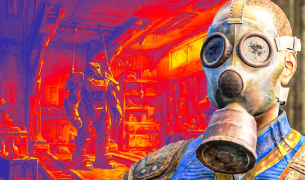
The Game of Life is played on a two-dimensional (2D) square lattice of cells, with each cell being in one of two possible states: live or dead. Each cell engages with its immediate eight surrounding cells, those being the adjacent cells on the horizontal, vertical, or diagonal axes. With each temporal increment, the ensuing changes take place:
- A living cell will perish if it has less than two living neighbors due to underpopulation.
- A living cell will continue to the following generation if it has two or three living neighbors.
- A living cell will die when it has more than three living neighbors, a result of overpopulation.
- A dead cell will come to life if it is surrounded by precisely three living neighbors, simulating reproduction.
These rules, which Conway chose because they are simple and can lead to interesting patterns, are applied simultaneously to every cell on the board, producing the next generation.
Nature of the Game
The Game of Life diverges from conventional games as it lacks players, and there is neither victory nor defeat involved. Instead, it is what's known as a "cellular automaton", a type of simulation where each cell in a grid can be in one of a finite number of states, and the state of each cell is updated based on the states of the cells around it.
The most famous cellular automaton is Conway's Game of Life, which was first proposed in 1970. The Game of Life unfolds on a bi-dimensional lattice wherein each unit can exist in one of two states: living or deceased. The game progresses in turns, with each turn representing a new generation of cells. The state of each cell in the next generation is determined by a set of rules that take into account the number of alive and dead cells in the cell's immediate vicinity.
The Game of Life it is also a useful tool for studying complex systems. Given the Game of Life's straightforward rules, developing a computer program to simulate the game is fairly straightforward. This makes the Game of Life an ideal platform for studying the behavior of complex systems, such as populations of animals or cells in the human body.
Visuals and Patterns
The visual elements of the Game of Life are quite basic, consisting of a two-dimensional grid where each individual cell is either colored black or white. This simplicity is one of the main appeals.
Even with its straightforward rules, the Game of Life is capable of generating highly intricate and aesthetically pleasing designs. The mesmerizing patterns observed are consequences of the interplay among the game's cells.
Famous Patterns
One of the most famous patterns in the Game of Life is the "glider." A glider is a configuration of cells that moves diagonally across the grid, leaving a trail of dead cells in its wake. Gliders represent a basic and frequently encountered pattern in the game, commonly utilized as building blocks for more intricate configurations.
Another well-known pattern is the "still life." A still life is a configuration of cells that does not change from one generation to the next. Still life artworks are available in an array of forms and dimensions, often boasting considerable beauty.
Replayability and Exploration
The Game of Life captivates with its infinite replayability. The game is endless, with no defined victory or defeat conditions. The game simply continues on, generation after generation, until the player decides to stop. The Game of Life is to relax and explore the behavior of complex systems.
Conclusion
In summary, "The Game of Life," often just referred to as "Life," was created by British mathematician John Horton Conway in 1970 as a cellular automaton. As a zero-player game, its progression is completely based on the initial setup, with no additional input needed. Players engage with Life by establishing a starting pattern and then watching it develop over time. The game is recognized for being Turing complete, meaning it has the capability to emulate a universal constructor or any Turing machine.
Pros
- The game is suitable for all ages
- Еndlessly replayable
- The game is easy to play and easy to understand.
Cons
- Too simple for some people.









